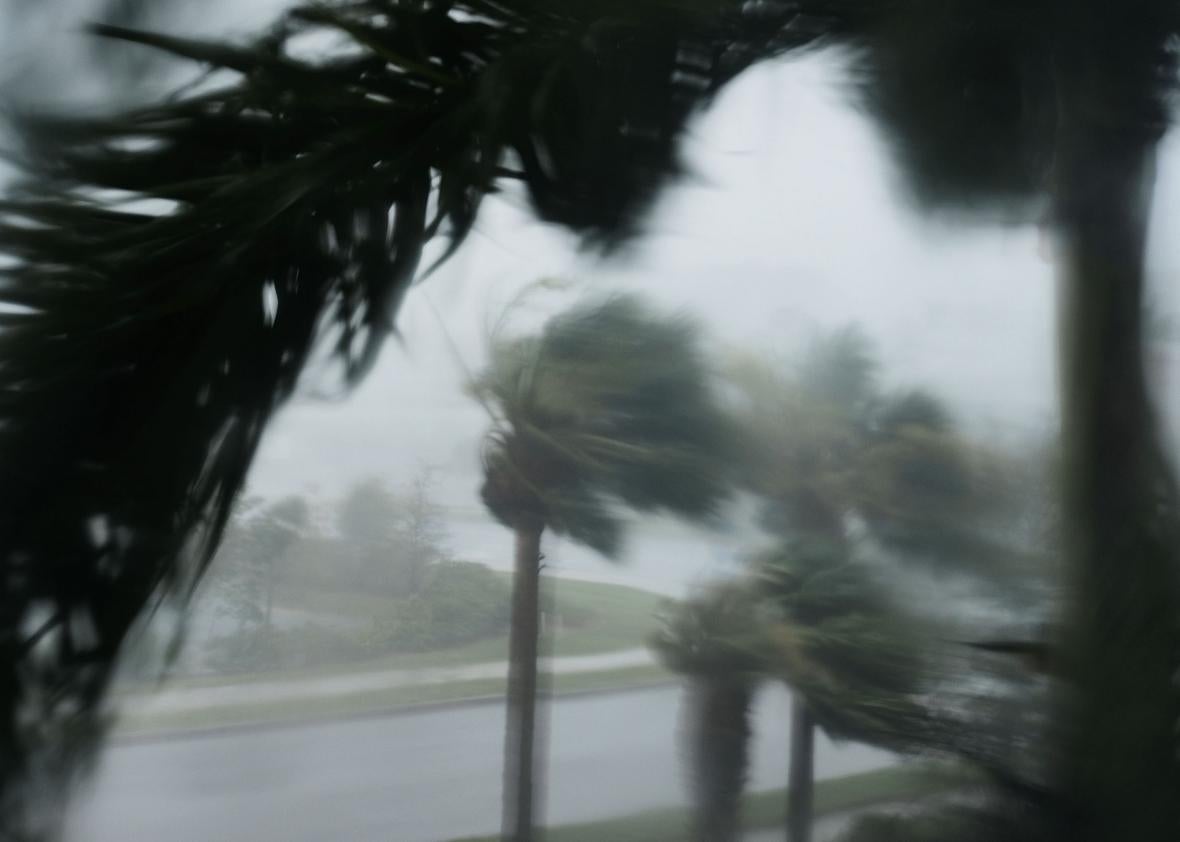Hurricane Irma is careening through Florida, and anyone still in its path has been privy to some of the storm’s less expected meteorological side effects. Yes, there have been winds, rain, and flooding. But that’s not all. CBS reported Saturday that a tornado had approached the shore from the ocean in Fort Lauderdale:
It dissipated once it hit land, but there have been reports of tornadoes elsewhere, too. That’s because most hurricanes create the conditions necessary to form tornadoes: thunderstorms, humid air, and sudden changes in wind velocity with height. These elements contribute to atmospheric instability, which triggers tornado genesis.
Hurricane-spawned tornadoes tend to be weak and ephemeral, but they can still be deadly. In 1961, Hurricane Carla produced a tornado that killed eight people, and in 1964, Hurricane Hilda produced another that killed 22 people. The National Weather Service has issued tornado warnings related to Irma for southern and eastern Florida counties such as Palm Beach and Brevard. Two thunderstorms capable of creating tornadoes have also been spotted over the Saint Lucie Nuclear Power Plant.
Irma has also brought a more unusual (and less dangerous) phenomenon—it has literally moved the sea. Irma’s pressure is so low that it is sucking water into its center, thus causing the ocean to recede from the shore in other places. Unlike tornado formation, this is an extremely rare occurrence in a hurricane, as atmospheric scientist Angela Fritz writes in the Washington Post:
As a meteorologist, there are things you learn in textbooks that you may never see in person. You know they happen theoretically, but the chances of seeing the most extraordinary weather phenomena are slim to none. This is one of those things — a hurricane strong enough to change the shape of an ocean.
Fritz notes that shifting shorelines have thus far been sighted on the Gulf Coast of Florida and in the Bahamas. A Florida resident on Sunday afternoon posted a tweet showing how parts of Tampa Bay are now absent of water:
Dry shores have also been observed in Long Island in the Bahamas, though the water returned by Saturday:
The water will also return to Florida once the storm passes.
